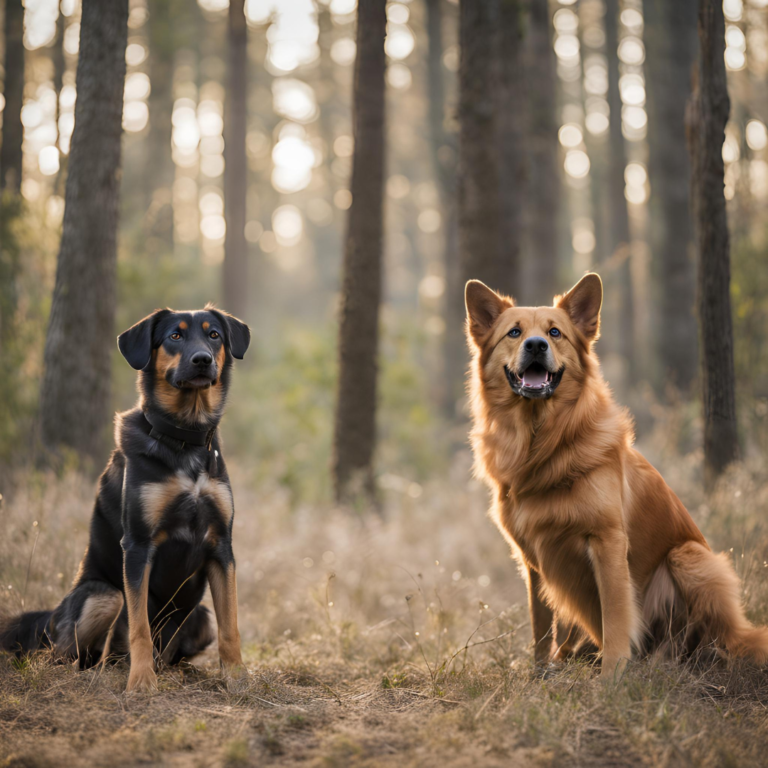Understanding the population number of Intact Male and Female Dogs in North Carolina is more than just a statistic—it’s a reflection of the state’s approach to pet ownership, community health, and animal welfare. Whether you’re a dog owner, breeder, or concerned citizen, knowing these numbers can inform decisions and policies. In this article, we’ll break down the latest data and what it means for the state. Did you know that the percentage of intact dogs can influence local wildlife and public health? Let’s dive in!
Contents
- 0.1 Overview of Dog Population in North Carolina
- 0.2 Intact Male Dogs in North Carolina
- 0.3 number of intact male and female dogs in north carolina
- 0.4 Regional Variations in Dog Population
- 0.5 Implications for Public Health and Animal Welfare
- 0.6 number of intact male and female dogs in North Carolina Policy and Community Initiatives
- 1 The Impact of Economic Factors on Dog Ownership and Intact Dog Populations
- 2 Educational Efforts and Public Awareness Campaigns
- 3 The Role of Breeders and Kennel Clubs in Managing Intact Dog Populations
- 4 Case Studies of number of intact male and female dogs in north carolina Populations in Specific Counties
- 5 Future Trends and Predictions for Dog Populations in North Carolina
Overview of Dog Population in North Carolina
North Carolina has a rich history of dog ownership, with dogs being an integral part of family life, hunting traditions, and community culture. Over the years, the state’s dog population has seen significant growth, reflecting both national trends and local preferences for pet companionship.
- Brief History of Dog Ownership Trends in North Carolina: Dog ownership has deep roots in North Carolina, with a strong tradition of working dogs used for hunting and farming. Over the past few decades, the role of dogs has expanded, with more households adopting dogs as pets rather than for work purposes.
- Current Estimates of Total Dog Population in the State: As of 2024, North Carolina is home to an estimated 2.2 million dogs, with the numbers steadily increasing each year due to rising pet ownership and favorable living conditions for families and their pets.
- Factors Influencing Dog Population Growth: The growth in dog population can be attributed to various factors, including urbanization, increased disposable income, and a growing awareness of the benefits of pet ownership for mental and physical health.
Intact Male Dogs in North Carolina
Intact, or unneutered, male dogs make up a significant portion of the dog population in North Carolina. Understanding the dynamics of intact male dogs is crucial for managing dog populations and ensuring public safety.
- Definition of ‘Intact’ and Its Importance in Dog Population Studies: An intact dog is one that has not been spayed or neutered. In population studies, tracking intact dogs is important because they are key contributors to breeding and, consequently, the overall dog population.
- Estimated Number of Intact Male Dogs: Approximately 35-40% of male dogs in North Carolina remain intact. This percentage varies by region and is influenced by factors such as owner preference, cultural practices, and access to veterinary services.
- Common Breeds of Intact Male Dogs in the State: Labrador Retrievers, German Shepherds, and Beagles are among the most common breeds of intact male dogs in North Carolina, especially in rural areas where these breeds are often used for hunting or herding.
- Impacts of Intact Male Dogs on Communities: Intact male dogs are more likely to exhibit territorial behaviors, such as roaming and marking, which can lead to conflicts with other animals and contribute to unplanned litters. This behavior underscores the importance of responsible pet ownership and community education.
number of intact male and female dogs in north carolina
Female dogs that are not spayed represent another critical aspect of North Carolina’s dog population. Their reproductive capabilities have a direct impact on the number of puppies born each year and the subsequent strain on animal shelters.
- Estimated Number of Intact Female Dogs: Around 30-35% of female dogs in North Carolina are intact, with higher numbers reported in areas where breeding is a common practice.
- Popular Breeds Among Intact Female Dogs: Breeds such as Golden Retrievers, Pit Bulls, and Cocker Spaniels are popular among intact female dogs in North Carolina. These breeds are often chosen for their breeding potential and the high demand for puppies.
- Breeding Trends and Practices Among Female Dog Owners: Many female dog owners in North Carolina choose to keep their dogs intact for breeding purposes, whether for commercial, show, or hobby breeding. This trend is more prevalent in rural areas where breeding dogs for hunting or working roles is common.
- Public Health Considerations Related to Intact Female Dogs: Intact female dogs are at a higher risk for certain health issues, such as mammary tumors and uterine infections. These health risks highlight the need for public awareness about the benefits and timing of spaying.
Regional Variations in Dog Population
North Carolina’s diverse geography, from urban centers to rural farmlands, leads to significant regional variations in the dog population, particularly in the number of intact dogs.
- Differences in Intact Dog Populations Between Urban and Rural Areas: Urban areas like Charlotte and Raleigh tend to have lower numbers of intact dogs due to stricter spay/neuter regulations and greater access to veterinary care. In contrast, rural areas may see higher percentages of intact dogs, reflecting different cultural attitudes and the practical needs of working dogs.
- Key Regions with Higher Concentrations of Intact Dogs: Rural counties, particularly in the Appalachian region and eastern North Carolina, have the highest concentrations of intact dogs. These areas often lack access to affordable spay/neuter services, contributing to higher numbers of intact animals.
- How Local Ordinances and Community Programs Affect These Numbers: Local ordinances requiring spaying or neutering, combined with community outreach programs, have proven effective in reducing the number of intact dogs in some urban areas. These programs often include mobile spay/neuter clinics and educational campaigns to promote responsible pet ownership.
Implications for Public Health and Animal Welfare
The presence of intact dogs in North Carolina has broad implications for public health and animal welfare, influencing everything from shelter capacities to community health risks.
- The Role of Spaying and Neutering in Controlling Dog Populations: Spaying and neutering are critical tools in managing dog populations. These procedures help reduce the number of unwanted litters, thereby lowering the burden on animal shelters and reducing the number of stray dogs.
- Health Risks Associated with Intact Dogs: Intact dogs are at higher risk for several health issues, including reproductive cancers and infections. For example, intact male dogs are more prone to prostate disease, while intact females have a higher risk of mammary tumors.
- Impact of Intact Dogs on Shelters and Rescue Organizations: Animal shelters in North Carolina often struggle with overcrowding, much of which can be attributed to the high number of intact dogs contributing to unplanned litters. This situation highlights the importance of spay/neuter programs and public education to reduce shelter intake numbers.
number of intact male and female dogs in North Carolina Policy and Community Initiatives
Addressing the challenges posed by intact dogs requires a combination of effective policies and proactive community initiatives. North Carolina has implemented several measures to promote responsible pet ownership and manage dog populations.
- Current Laws and Regulations Regarding Spaying and Neutering in North Carolina: Many municipalities in North Carolina have enacted laws requiring spaying or neutering for pets, particularly if they are not registered for breeding. These regulations aim to control the dog population and reduce the number of stray animals.
- Community Programs Promoting Responsible Pet Ownership: Numerous non-profit organizations and animal welfare groups in North Carolina offer low-cost spay/neuter services, often targeting underserved areas. These programs are essential for making sterilization accessible to all pet owners and preventing overpopulation.
- How Data on Intact Dogs Influences Policy Decisions: Accurate data on the number of intact dogs helps inform policy decisions at the state and local levels. Policymakers use this information to craft regulations that balance the needs of pet owners with the goals of public health and animal welfare.
The Impact of Economic Factors on Dog Ownership and Intact Dog Populations
- How Income Levels Affect Decisions Around Spaying and Neutering: Economic stability often influences whether pet owners opt for spaying or neutering their dogs. Higher income levels typically correlate with higher rates of sterilization, as owners can afford the associated veterinary costs.
- Correlation Between Economic Hardship and Higher number of intact male and female dogs in north carolina: In economically disadvantaged areas, the number of intact dogs tends to be higher. Financial constraints can lead to decisions to delay or forgo spaying and neutering, contributing to larger intact dog populations.
- Access to Affordable Veterinary Services and Its Impact on Dog Population Control: Access to affordable veterinary care, including low-cost spay/neuter services, plays a critical role in managing dog populations. Regions with limited access often see higher rates of intact dogs and, consequently, increased dog populations.
- The Role of Non-Profit Organizations in Providing Low-Cost Spay/Neuter Services: Non-profit organizations are crucial in bridging the gap between economic barriers and responsible pet ownership. They offer low-cost or free spay/neuter services, helping to control dog populations, especially in underserved areas.
Educational Efforts and Public Awareness Campaigns
- Overview of Educational Programs Promoting Spaying and Neutering: Various educational programs across North Carolina aim to raise awareness about the benefits of spaying and neutering. These initiatives often target schools, community centers, and public events to reach a wide audience.
- Success Stories of Public Awareness Campaigns in North Carolina: Public awareness campaigns have led to notable increases in spay/neuter rates in certain areas of North Carolina. Success stories highlight the importance of ongoing education and community involvement in promoting responsible pet ownership.
- Challenges in Educating the Public About the Importance of Dog Sterilization: Despite ongoing efforts, challenges remain in educating the public, including cultural resistance, misconceptions about dog health, and economic barriers. Addressing these challenges requires targeted strategies and community engagement.
- The Role of Schools and Community Centers in Spreading Awareness: Schools and community centers play a pivotal role in spreading awareness about spaying and neutering. Educational programs in these settings can instill responsible pet ownership values in younger generations, helping to reduce intact dog populations in the future.
The Role of Breeders and Kennel Clubs in Managing Intact Dog Populations
- How Breeders Approach the Topic of Spaying and Neutering: Responsible breeders often follow strict guidelines regarding spaying and neutering, particularly when it comes to pet-quality puppies. They play a significant role in managing intact dog populations by advising new owners on the benefits of sterilization.
- Guidelines from Kennel Clubs on Breeding Practices: Kennel clubs provide breeding guidelines that emphasize the importance of ethical practices, including considerations for spaying and neutering. These guidelines help breeders maintain healthy dog populations and prevent overbreeding.
- Ethical Considerations and Responsibilities of Breeders: Ethical breeders take responsibility for the dogs they produce, ensuring that they are placed in homes committed to responsible pet ownership. This includes discussing the potential benefits of spaying and neutering with new owners.
- Breeder Contributions to Maintaining Healthy Dog Populations: By following ethical breeding practices and promoting responsible pet ownership, breeders contribute to maintaining balanced and healthy dog populations in North Carolina.
Case Studies of number of intact male and female dogs in north carolina Populations in Specific Counties
- In-Depth Analysis of Dog Population Statistics in Mecklenburg County: Mecklenburg County, with its diverse urban population, offers a unique case study in dog population management. An analysis of intact dog statistics here can provide insights into the effectiveness of local spay/neuter programs.
- Dog Ownership Trends in Wake County: Wake County, one of the fastest-growing regions in North Carolina, shows interesting trends in dog ownership and intact dog populations. Understanding these trends can help tailor future public health initiatives.
- Comparative Study of Urban vs. Rural Counties: A comparative study between urban and rural counties reveals significant differences in dog ownership practices, including rates of intact dogs. These differences highlight the need for region-specific approaches to dog population control.
- Impact of Local Dog Control Measures in High-Population Areas: Local dog control measures, such as mandatory spay/neuter ordinances, have had varying degrees of success in high-population areas. Examining these impacts can guide future policy decisions in managing dog populations.
Future Trends and Predictions for Dog Populations in North Carolina
- Projected Changes in Dog Populations Over the Next Decade: Looking ahead, demographic shifts, urbanization, and changes in pet ownership culture are expected to influence dog populations in North Carolina. These projections are crucial for planning future animal welfare initiatives.
- How Emerging Trends in Pet Ownership Might Influence Intact Dog Numbers: Trends such as the growing popularity of mixed breeds, adoption of rescue dogs, and an increased focus on pet health may lead to a decline in intact dog numbers as more owners opt for spaying and neutering.
- Technological Advancements in Veterinary Care and Their Potential Impact: Advancements in veterinary technology, including less invasive spay/neuter procedures, could make these services more accessible and affordable, potentially reducing intact dog populations.
- Predictions for Legislative Changes Regarding Dog Population Control: As awareness of the importance of controlling dog populations grows, North Carolina may see new legislative measures aimed at promoting spaying and neutering. These changes could have a significant impact on future intact dog numbers.
Conclusion
The numbers tell a story, but it’s up to us to act on it. Understanding the population of intact male and female dogs in North Carolina offers valuable insights into the state’s approach to animal welfare, public health, and responsible pet ownership. Whether you’re a policymaker, a dog owner, or an advocate for animal rights, these statistics provide a foundation for informed decision-making. Let’s work together to ensure a balanced and healthy environment for our furry friends and our communities!




